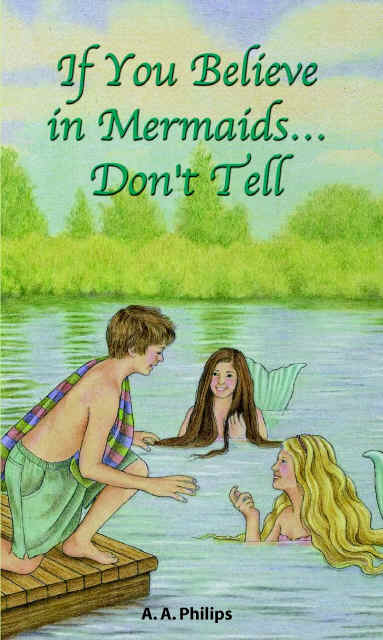Both books make it clear that the question is not about what choices the protagonists will make but that their ways of being in the world are just fine.

10,000 Dresses
Written by Marcus Ewert, Illustrated by Rex Ray; Seven Stories Press; 32 pages
If You Believe in Mermaids, Don’t Tell
By A. A. Philips; Dog Ear Publishing; 150 pages
There are now several books aimed at gay children or children of gay parents. But there is a relative dearth of books about transgender or gender-non-conforming children.
Two delightful new books seek to fill in the gap. 10,000 Dresses, aimed at young children, tells the story of Bailey, who dreams every night of 10,000 dresses. Her favorite is one made of crystals. One day, she asks her mother to buy her a dress like the one in her dreams. The mother’s response provides the first clue about Bailey’s troubles: “Bailey, what are you talking about? You are a boy! Boys don’t wear dresses!” Bailey’s response—that she doesn’t feel like a boy—only brings on an angry admonition to never mention dresses again. From there on, we see Bailey falling in love with different dresses, only to be met with the disgust of her family. Finally, she meets Laurel, a girl who helps her make one of the dream dresses. This book is meant to be read aloud to young children, so it’s best not to wonder, as an adult might, what happens to Bailey when she returns to her home. This short and lovely book gives young gender-non-conforming children a fantasy world where their dreams do come true.
If You Dream of Mermaids, by A.A. Philips, is for young adolescents. Todd is a 13-year-old boy who loves playing with dolls and dressing up in skirts. But he remembers all too well the fuss that erupted when he was caught in his mother’s clothes as a child. His father, determined to make a boy out of the son he worries will not grow up to be manly enough, wants to sign him up for camp, and Todd hates sports. As a compromise, Todd is sent to nature camp, where he meets Brad, Sylvie and Olivia. Sylvie begins to ferret out Todd’s secret, and Olivia is an odd and awkward girl who, like Todd, doesn”t quite fit.
Philips writes a gently probing account of a boy who happens to want to do the things that, supposedly, only girls do. She combines all the classic elements of young adolescent literature—camp, bullies, a momentary scare and awkward kids stumbling into each other as they try to find their place in the world—with an accurate and non-pathological rendition of Todd’s inner life. We see Todd’s daily struggle to fulfill gender stereotypes. That includes monitoring his own body: “I’m careful how I move. I hold my shoulders stiff, so they won”t swing. … But sometimes I forget.” This is juxtaposed with his internal narratives about finding freedom, some of which involve fantasies drawn from fairy tales but also from the natural world he’s made to explore as part of camp.
Will Todd or Bailey grow up to engage in gender-reassignment surgery? Or are they children whose gender performance will not match what society, for now, demands from them? Both books make it clear that the question is not about what choices the protagonists will make but that their ways of being in the world are just fine. “Just fine” may not seem like much but, as both authors indicate, it’s probably the most and the best we can give them. What Todd and Bailey want is, on occasion, to be encouraged in their dress-seeking adventures but mostly to be left alone in their gender-non-conforming reveries. In a perfect world, that would be just fine with the rest of us.